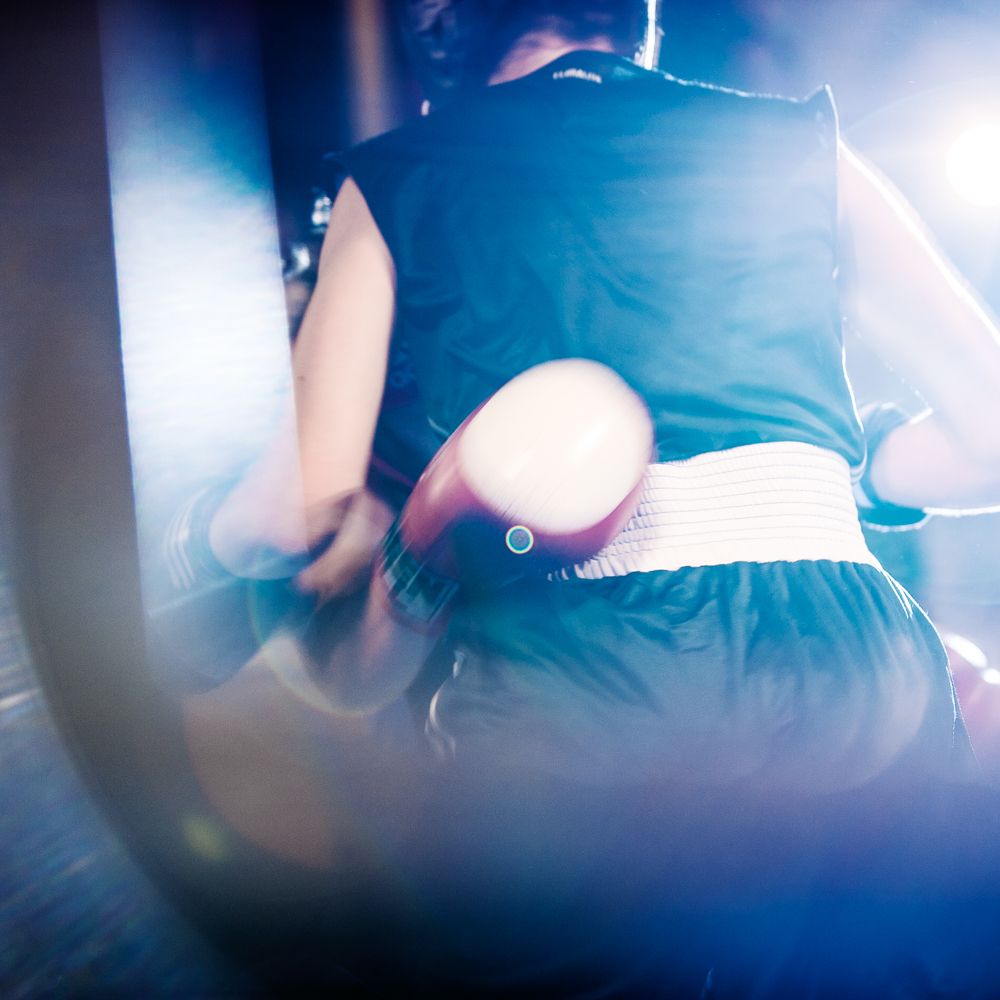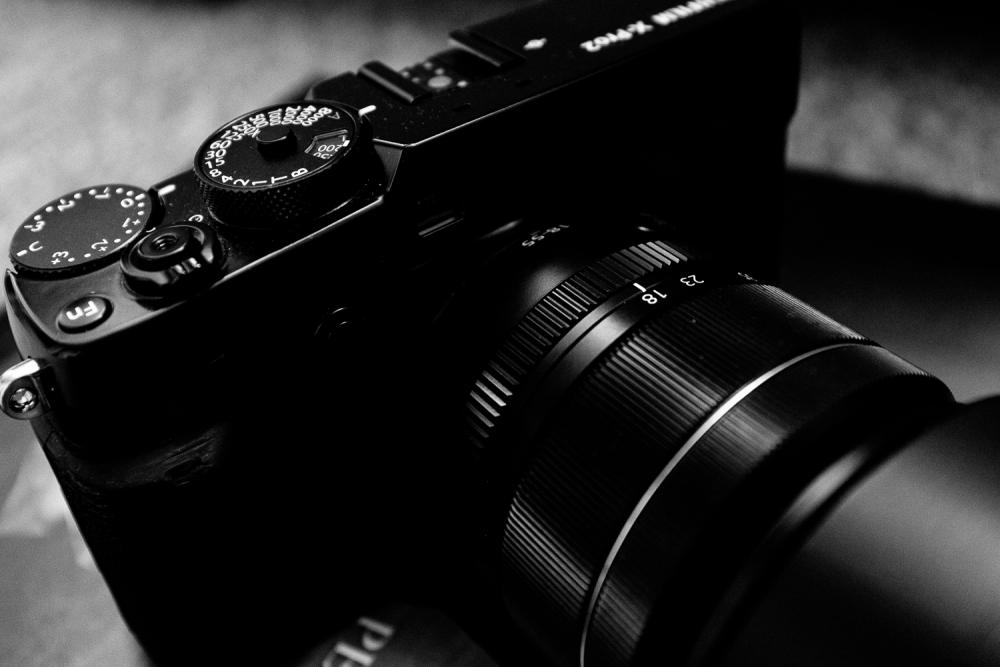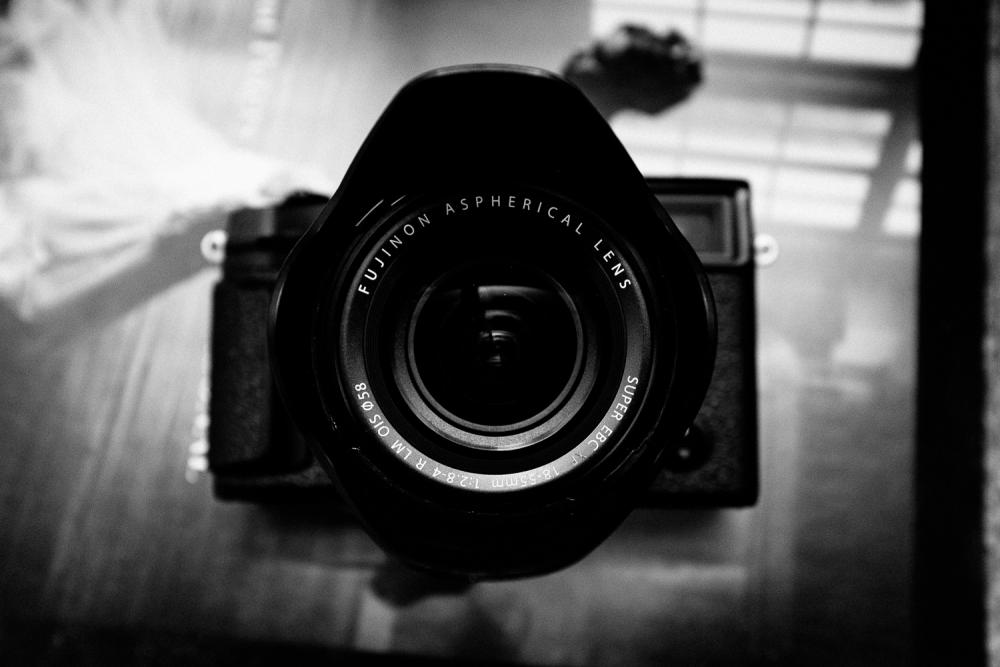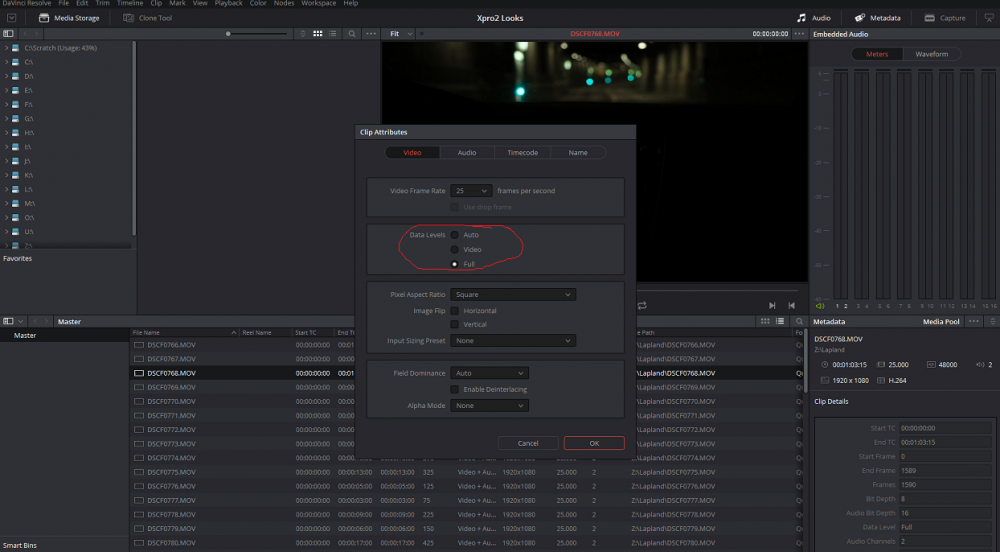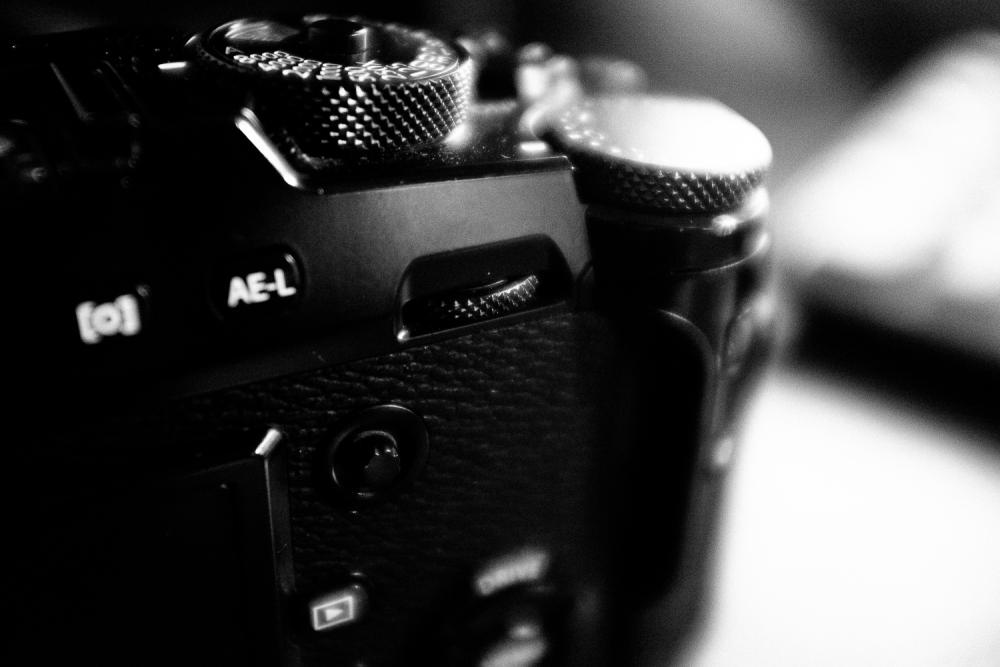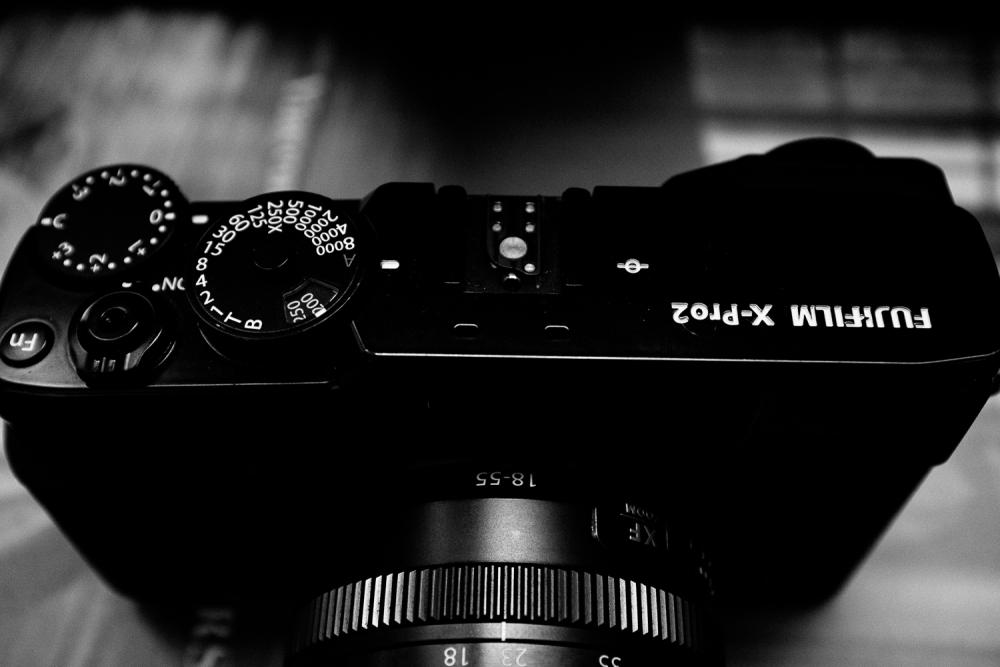-
Posts
90 -
Joined
-
Last visited
Content Type
Profiles
Forums
Articles
Everything posted by j-oc
-
X-pro2 usually with the XF18, sometimes with the XF23 1.4
-
@Tim Sewell Good choices, I'm sure you'll really enjoy the Fujis. I'm a stills photographer who does a bit of video on the side and my Xpro 2 is perfectly fine for the jobs I do - vox pops, interviews, theatrical trailers. i think in choosing a Fuji body the key is to try them out and see how you like the body shape and ergonomics. The T and Pro lines are totally different and I have a different reaction to both. I banged on at length about this here:
-
I've not done exactly this but I used a Bluetooth audio monitoring system in the context of a theatre show and to be honest it was a massive pain in the ass. It's fine when it works but being a consumer system there will be an occasion when it won't and it becomes an unnecessary source of aggravation. Cables are cheap, simple and idiot proof.
-
Thanks for the tips guys. Is there a stabilised prime anyone likes?
-
What it says basically. I realise I'm super late to this party but I have the chance to get a basically free BMPCC, but I'd only really be interested in it with a normal to wide stabilised prime lens. Something like a 28-50 FF equiv. What would the hive mind recommend / have been using?
-
Not exactly your situation but similar... The battery indicators on my X-Pro2 are extremely unreliable. If I'm photographing a long event, think wedding, when I'm using two cameras but not using one for a while I'll turn it off when it's hanging over my shoulder and turn it back on in the same movement on as I raise it to my eye. I've nailed this technique so I don't lose any time doing it. I don't find the actual battery life too bad, and it is pretty consistent - but yeah, the indicators are not all that.
-
It sounds like you and I have completely different ergonomic brains! I used to use the 5D in continuous focus via the shutter half press and could never get it to behave predictably. By contrast with the D750, cross points or no, once I figured out how the AF worked it was really easy to adapt camera movements, triggering the AF, timing of the shutter release etc to get what I was after. And I love that 3 way selector! It feels natural to me to have single farthest away from me, manual closest and continuous a click in either direction. Its cool how we both love the thing that drives the other crazy. Moral of the story: rent before you buy.
-
Thanks for actually taking the time to do this. Kudos to you to for providing some real world data. I don't have my D750 anymore and didn't do any side by side testing by my impressions were that at the very darkest light levels it would track movement better than the Fuji, but as BTM points out we are basically talking about complete darkness at this point so unless you are photographing there all the time either would probably suit you. Rent them and try? I could never get on with the 5Ds autofocus system. It's not that it's not powerful, but I found it very inconsistent. Sometimes not locking at all, sometimes giving false confirmation. That lack of predictability did not inspire confidence, but many many people love it so I'm willing to accept I might be partially to blame here.
-
I used to own a D750. In terms of pure extreme low-light and low-contrast focusing ability it is better than the X-series cameras. With that said, even though I am a professional performing arts photographer and really appreciate the power to focus in the dark, I still prefer the Fuji.
-
Yeah - the examples are so useful. He's a really good teacher.
-
I use the X-Pro2, which has the same focusing system and it Is excellent. Good enough to track fast moving dancers in f2.8 - 1/250 - 12800ISO kinda light. The exceptions to this are the 14mm, 16mm and older 23mm. I've got the last one and it is a beautiful lens optically, and the clutch focus is very smooth and cool for manual focusing. About 225 degrees of throw. You can hear the lens elements moving though so be aware of that if you are recording audio on camera. The focus by wire is a bit of a mixed bag, by which I mean it is mostly not very good on older primes like the 35mm and 56mm. The 16-55 by contrast is pretty useable. The sensitivity is just at the right point where you can usefully follow stuff in the frame. Personally, I like it. Its cheap and cheerful, and if you don't expect miracles it is a sharp, small and well built handy zoom. It's something of a steal on the used market and he stabilisation is really good.
-
Alexis Van Hurkman's book (remember them?) Colour Correction Handbook is a great introduction to the theory of colour grading and a useful reference. Read it and then get some training on the software of your choice.
-
You don't mention whether or not you want the windows in shot whilst you light the talent with hard light. If you don't, then simply close the curtains, hang a drape over it, or use bin bags and you are good to go. If you do need them in shot then buy a roll of neutral density gel from a theatre lighting place and tape or blu tack over the windows it in order to bring the level down to the point where your hard lights are the dominant source. ND gel is cheap and reusable. I once wanted to buy a sheet (I design lighting for dance and theatre) but ordered a roll by mistake. It was so useful I kept it.
-
I'd be very much up for this so if it doesn't work with Dan do sling me a PM!
-
Ding!!Ding!!Ding!! Noone wins the prize! Would you like an AM clock radio or the cuddly toy? No? Ok, well you can have the X-Pro2 review anyhow... I've owned an X-Pro2 for about a year now and it is my main stills camera for just about everything that I do, which is headshots/portraits, performance, behind the scenes reportage and documentary weddings. I've always done video on the side of this as it is nice little extra when a client says to you, "you're doing our promo images, could you also produce a trailer / do an interview / record this rehearsal for us?" Until now, I've kept a DSLR system as well as my Fuji's to use for video and the more tricky movement-based stills stuff - but after bringing along the X-Pro2 to a number of dance and theatre shoots this year and seeing how capable it is, the less and less I am seeing the justification to keep the Nikons. It is simply the best stills camera I've ever owned, but this is not the point of the review. On the video side of things, I've never been wowed by the Fuji's quality but neither did I put any serious effort into testing it out. Going on holiday last year I would normally have brought the X-Pro2 and the 35/1.4 with me but instead brought the 18-55 so I could give the video a whirl. Nothing fancy, just larking around and having fun. And you know what, in it's quirky, strange little way I kind of loved it. The biggest thing about it is that it completely changed my attitude to sufficiency in shooting video and how I want to work in the future. That said though, we need to run through some basics about the machine to get to the conclusion. The Good The video quality - this is much improved over previous Fuji's, which had so much moire as to be pretty much unusable. There is still some moire present, you can see a some at 0.24 on the suitcase and 0.28 on the horizon for instance, but it is not too bad and manageable unless in extreme situations. I really like camera's colour reproduction. I was using a Pro NEG Std preset that I use for headshots and it looks just great to me. The other film simulations are cool and will likely cater to your taste. It isn't a realistic colour palette per se, but rather it looks very classic. I don't want to use the term flim-like, because that just about means anything to everybody because it is so overused, but the colours from this camera look very familiar and recognisable, no doubt because the socialisation process we all go through when we grow up looking at movies, photos, tv etc. Yeah, that's a fancy way of saying it looks nice. You absolutely do need to deal with the issue that straight off the card the files have a wonky black level. In Resolve, this is easy enough - just change the data level in the Clip Attributes screen to Full. Once you've done this, all of the detail return to the shadows. It is still 8-bit footage so you can't push it around too much in the grading, but I think the point I'm making is that you don't really need to from an aesthetic point of view. The output is really sharp - possibly a bit too much, provoking some aliasing. I didn't do any tests to see if turning down sharpness works when recording video, anyone tried this? Raising the ISO above 1600 loses detail quite fast, although the noise is not very distracting so you can get away with it. It seems quite fine and monochromatic as opposed to the sort of red/purple noise you get with Canon DSLRs for instance. IIRC the first two clips in the car were at 1600 and it looks perfectly usable to me. The build quality - really, really good. It is mostly metal and feels very solid and tightly put together. The loose and cheap feeling shutter release that the X-Pro1 had, has thankfully been replaced with a much better one. Funnily enough, I didn't consider whether taking the camera out in -25C weather for a week was going to be good for it until I was on the way home but the camera didn't skip a beat. I just took the lens off and battery out when I got in to prevent any condensation damage and it was all good. The lens choice - Fuji's lenses are just great optically. I've owned or used the XF18, XF27, XF35/1.4, XF56, XF90, XF18-55 and XF50-140 and they are all optically great and solidly built. Even the XF18 and XF18-55 which the internet seem to dump on are great lenses for the sorts of prices they command used. I used the 18-55 exclusively for the video above the stabilisation is great. Even with my crappy technique it was perfectly possible to get useful handheld footage. If you are getting a Fuji for video, you are going to want to get this lens. One caveat I will put out there is that most of the XF lenses focus by wire as opposed to hard manual rings. I think it is the XF14, XF16 and XF23 are the outliers here. The focus mechanisms are dampened and pleasant to use but obviously you can't use follow focuses etc. The looks - I won't wax lyrical but it is a fine looking camera. Beyond the venality of this, it does come in useful if you work in the way I do and value an unobtrusive camera that can also be a conversation starter. I bumped into a photographer acquaintance of mine at a bookstore and she was convinced it was a film camera. Many times with the camera to my eye recording video people have assumed I'm hipstering it up with an old rangefinder and ignored me. The Bad The feature set - 4K, IBIS, headphone jack, LOG profile, HDMI out, audio meters etc etc - yep, this camera doesn't have any of that. It is just about as basic as it gets in terms of what you get for your hard-earned. 15m max record time. The price - linked to the above, this is not a cheap camera. It's about £1250 brand new right now, and you are going to want to spend £300 or so on the 18-55 as well. There are a lot of other options in that kind of price bracket. The ergonomics - this is the real killer. The camera's tactile controls and multiple viewfinders are a pleasure to use when taking photos but translate very clunkily to using video. The OVF and hybrid finder work perfectly for taking stills but feel very off for video. The concept of seeing out the frame becomes less useful as the tab which shows your exposure and focus is often too small to be useful. The worst culprit though is the rear wheel that is used to trim shutter speed. In a big step back from the previous model, this is much easier to knock with an errant thumb. I normally turn this off when shooting photos but you can't when shooting at 24P/25P because the top wheel stops at 1/60! To top it off, Fuji has made some very strange choices about what you can and cannot change and access whilst recording. So, you can change your shutter speed (and you will, many times and always accidentally) but you cannot change ISO. Yep, the ISO ring does nothing whilst recording so if you are walking between inside and outside for example you are out of luck. Eventually, I gave up and shot everything in 30P, disabling the rear wheel. Also, you can't access a histogram or the focus peaking tools whilst recording. Why? No idea... This adds up to a fairly cumbersome shooting experience until you get used to it, although it is a bit easier on a tripod for a static scene. So what does all this add up to? At the end of each year I ponder at length what has gone well, what needs improvement and where I want to focus my energy in the next year. It quickly became clear to me that the video side of what I do is very much an after thought but demands an extraordinarily high amount of kit. After looking at the holiday stuff, it struck me that for all of the flaws and gimme's of this camera, it is absolutely sufficient for what I need: a nice 1080P image, the ability to get handheld footage and a form-factor that suits my documentary style. In fact it is way better and more enjoyable than lugging around a D750, two pro lenses, a big-ass tripod and a Video Assist. I feel much better about pushing myself to do good stuff with this machine than relying on a load of gear that ultimately weights me down. I'll still be able to do the quickie Youtube vids / interviews / casting tapes that my clients ask for, just do it in a more fun way. The point of sufficiency has been reached. For me this has been a great lesson that more isn't necessarily better and that learning to use what you've got will make you better at what you do. So, the Nikon stuff is now on sale: http://www.eoshd.com/comments/topic/21355-fs-studio-sale-nikon-blackmagic-and-sachtler/ Should you get one? I'm aware this a video forum so people's needs are going to be different to mine but here is how I feel about it: Do you shoot mostly video? No, get something else. Do you do half and half and are looking for a second system? Maybe, rent one and try it out. Are you a photographer who wants to do a bit of video and likes the rangefinder style? Seriously consider it.
-
Cold thus far... This seemed weird so I took a look at it, and sure enough, the Vimeo version was totally different to original file. I uploaded a new export to YT and it looks much better - not exactly sure why Vimeo is choosing random black levels:
-
Let's play a game of guess the camera - I'll drop a full review when someone comes up with the right answer. I went to Swedish Lapland over the holidays and it was a unique experience. There are only fours hours of daylight and we spent our time riding snowmobiles up a mountain and drinking coffee in a pristine arctic wilderness. I took a little camera with me and this is the result - a mixture of 25P/30P re-conformed. Aside from one clip with a white balance change and another with an exposure tweak this is all SOOC. It's not art, but hey, it's the holidays.
-
Very much a matter of personal taste but were I in your shoes I'd go for Kinos. I rent them from time to time and just love them - insanely beautiful light made easy. If you are after some hard light as well I'd use the strobes or pick up a used dedo kit for when you need a bit of that.
-
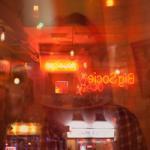
Shooting with the Fuji X-T2 in Italy - Samsung NX1 and Sony A6300 beater?
j-oc replied to Andrew Reid's topic in Cameras
That isn't my experience at all. I use the X-pro2 all of the time for portraits and the JPEGS are fabulous, c.chrome, pro neg std and astia are all very pleasing. -
Definitely agree. So much to be said for using what you've got and focusing your energy on being creative.
-
I'd rent one, the other or both to see if you like them and if you do, just buy them. Don't waste your life wishing for a better camera if like the one you have.
-
I'm a massive Fuji fanboy. I've used X-series cameras since the X Pro1 and love love love love them, quirks and all. The newer models like the XPro2 / XT2 are now so refined that shooting with them is a pleasure. The older models are much slower and have more gotchas but are still soulful machines. It's not an exaggeration to say they've changed my perspective on photography. Personally, I'm not wild about the X-T2 video but if it suits you then great. Lenswise, all of the primes are optically amazing but only the XF14mm and XF23mm have mechanical focus rings. The rest are all focus by wire if I recall correctly. Some are definitely easier to manual focus than others, the XF18mm is fine, the XF56mm is much harder. Like people have said above the 18-55 is a must buy if you are doing handheld video. It's likeweight, optically fabulous, great stabilisation and super cheap used. One final thing - buy loads and loads of batteries. On a wedding with the X100T and XPro 2 I'll get through around 10 a day!
-
Word. I read the interview and, to be honest, I do share the sentiment from some in this thread that it is confusingly argued. With that said I don't find it in the least bit surprising that Nikon hasn't produced a high-end video camera. It is just not where their expertise is. A myopia that both video and stills people share is that they both think that all camera users are like them - i.e. dedicated to their own visual form to the exclusion of all others. The reality is that that full-time working stills photographer and the enthusiast/one man band/small production video company are small minorities of the total users of cameras. Way more common these days are hybrid users who do a bit of both, like err... me. Nikon now has a range of cameras that work perfectly for this market. Sure, there are some quibbles like a lack of focus peaking but for that they are, they are awesome tools. The amount of sales that Nikon would gain from developing some sort of cinema DSLR would not likely exceed the cost of development. Look at the 1DC - awesome machine but didn't set the world on fire sales-wise. No-one who uses a D5 or 1DXII, which is hardcore sports and new guys, is swapping to a GH4. I reckon stills from video is going to be a huge technology in the future but it is not there at the moment for professional use.
-
Don't bother with the 1.2. It has loads of veiling flare that only goes away at f4 or so. It's not terrible but do you really really that tiny extra bit of performance v a 1.4 or 1.8? The new Nikon 1.8 primes are really nice. Light, small, well built, autofocus very fast and great value.
-
I had the AI but I don't think there is any meaningful optical difference between the two. There were two versions of the K lens, one with older optics and one with the AI optics. So you may have had the older version... or you and I differ on our criteria for good looking lenses! Honestly though, I'd try and borrow one locally and see what you like.

